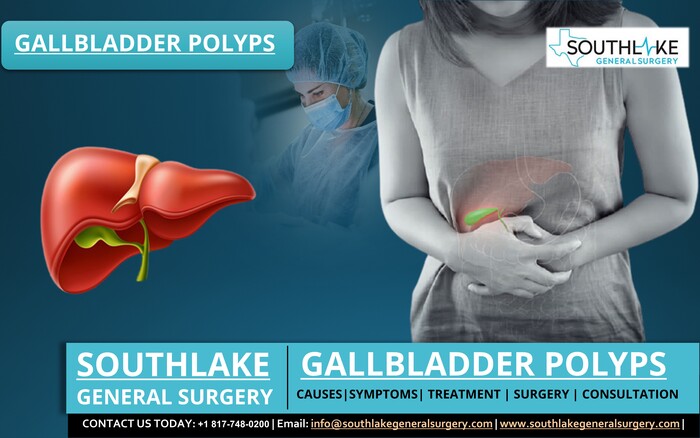A small pear-shaped organ that stores bile produced by the liver refers to the gallbladder. Whereas small, unusual growth of tissue that gets through from the lining of the inner parts of the gallbladder known as is Gallbladder polyps. About 95 percent of such medical conditions are noncancerous.
Causes of Gallbladder Polyps
The reason for gallbladder polyps is uncertain. The gallbladder releases bile into the small intestines to break down fat. Bile includes bile salts, fat, bile pigments, and cholesterol.
There seems to be a connection between the gallbladder polyps and the way body separates fat. The probability of getting gallbladder polyps increases in case your body doesn’t break down fat properly.
How many types of Gallbladder Polyps are there?
Gallbladder polyps are categorized as benign or malignant. Benign refers to noncancerous or not harmful all alone. Malignant refers to cancerous. There are a few sorts of gallbladder polyps.
Cholesterolosis and pseudopolyps. Pseudopolyps is one of the usual sorts of gallbladder polyps that don’t form cancer. It is the collection of cholesterol brought about by a medical condition known as cholesterolosis.
Pseudopolyps may be a sign of gallbladder disease like chronic cholecystitis. Cholecystitis is an unanticipated inflammation of the gallbladder.
Inflammatory Gallbladder Polyps. It is usually connected with inflammation of the gallbladder wall and inflammatory gallbladder polyps don’t form into cancer. It is often identified in individuals who have recurrent experiences of acute biliary colic and cholecystitis. This condition occurs when a gallstone obstructs a bile duct.
Adenomatous polyps. These types of polyps are real tumors and rare that happen in individuals who had gallstones. The size could range between 5 to 20 millimeters. Individuals with polyps bigger than a centimeter are at higher risk of forming cancer.
Adenomyomatosis. It is more usual in people who grow older and it is identified as precancerous injury.
Malignant polyps. It is a rare polyp, and the size may vary around 2 centimeters in diameter. Malignant polyps are just one typically identified in individuals.
What are the Symptoms of Gallbladder Polyps?
Symptoms of gallbladder polyps are usually unidentified in individuals. It is identified once the doctor examines through a CT scan or ultrasound for any reason. There is no distinction in the symptoms of malignant and benign polyps.
- Indigestion
- Vomiting and Nausea
- Pain in the upper right abdomen
Diagnosis of Gallbladder Polyps
Since gallbladder polyps often have no symptoms, it is difficult to diagnose gallbladder polyps. In the event your doctor figures you have polyps, they might need to do an ultrasound.
Treatment of Gallbladder Polyps
Based on benign gallbladder polyps size your doctor advise for its treatment. For a small polyp, your doctor may just like to follow up with normal ultrasound which isn’t creating any symptoms.
For a large polyp, your doctor may suggest gallbladder removal surgery or if an individual is experiencing any symptoms.
Malignant Gallbladder Polyps
These polyps are rare but there are few variables that increase the risk of getting them. It includes:
- gallstones
- 50 years of age and above
- Diabetes
- Polyps with symptoms
- Polyp’s size
- Single polyp
Recovery Time After Surgery
Most gallbladder polyps are common and generally benign. Your doctor may suggest following up with an ultrasound to evaluate for any changes in case you have not encountered any symptoms by far now.
If your doctor suggests gallbladder surgery also known as cholecystectomy to remove the gallbladder. It is always recommended and has fewer complications. Through Laparoscopic gallbladder removal surgery, a patient can go home the same day after surgery. In laparoscopic surgery, your doctor inserts a small tube with a tiny camera on top through a small incision to remove the gallbladder. Recovery time in this procedure would take about 1-2 weeks.
If your doctor suggests open surgery to remove the gallbladder, the recovery process takes a little longer as compared to laparoscopic surgery. In open surgery, your doctor makes one large incision to remove the gallbladder, then the surgeon will close the incision with sutures. You might need to stay in the hospital for 2-3 days after surgery. Recovery time in this procedure would take about 4-6 weeks.
Appointment
For more information on Gallbladder Polyps – causes, symptoms, diagnosis, treatment, surgery, and consultation. Please contact our healthcare expert today at +1(817) 748-0200. You can also make an online appointment with us.
Follow us on Facebook.

